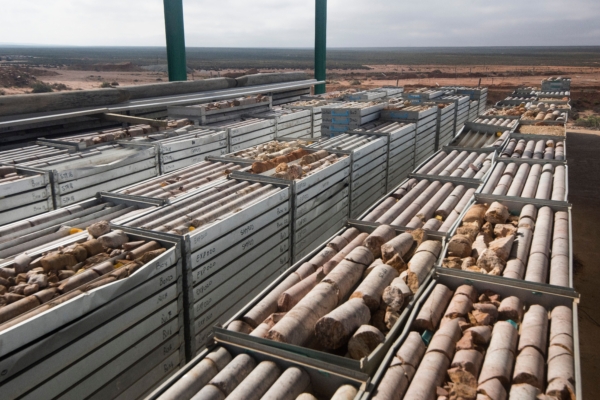Recently, the Oak Ridge National Laboratory of the US Department of Energy has discovered some chemical “chameleons” that can simplify the purification process of rare earth elements. This discovery holds the potential to reduce the environmental pollution caused during rare earth separation processes, which are both complex and generate a large amount of pollutants that are difficult for the environment to bear.
Rare earth metals, which include over 10 commonly used types, mostly exist in the form of compounds in natural ores and soils. Many electronic components and chips rely on rare earth metals. However, due to the very similar chemical properties of the metal elements in rare earth materials, and their presence in trace impurities, the extraction and separation of these elements pose significant challenges.
The lanthanide (Ln) elements in rare earth metals are usually embedded in minerals, requiring numerous steps for purification. The entire purification process involves a large amount of ligand solutions and organic solvents that capture specific metals, and separation must be carried out in either “heavy to light” or “light to heavy” sequences. Thus, the entire separation process is costly, time-consuming, and highly polluting. Therefore, an efficient, selective, and environmentally friendly separation technology is urgently needed.
In collaboration with Vanderbilt University, the Oak Ridge National Laboratory of the US Department of Energy embarked on a quest to find an efficient method for acquiring lanthanide metals. The research led to the discovery of unique chameleon-like ligands that can change with the environment and bind with different lanthanide elements. The research findings were published in a journal of the American Chemical Society in mid-August.
Researchers first identified a tetradentate bis-enaminone ligand with excellent structural stability, resistance to hydrolysis, and high catalytic activity. They introduced substituents to make the ligand soluble in common organic solvents, and then used rhodium (Rh) or palladium (Pd) catalysts to create four visually similar chameleon-like ligands.
These chameleon ligands are tetradentate ligands consisting of nitrogen (N) and oxygen (O) groups (containing atoms with four or more lone pairs). These nitrogen and oxygen groups function like “claws,” capable of capturing surrounding lanthanide metals. The behavior of these “claws” changes with variations in the surrounding environment, such as different acid-base concentrations in the solution and different elements near the lanthanides. For example, at low nitric acid concentrations, they preferentially capture lighter lanthanide ions (closer to lanthanum), whereas at high nitric acid concentrations, they preferentially capture heavier lanthanide ions (closer to lutetium).
Additionally, researchers found that the selectivity of these chameleon ligands changes over time, gradually shifting from cerium (Ce) to samarium (Sm) elements. Under higher nitric acid concentrations, the ligand’s selectivity transitions from samarium to ytterbium (Yb) elements.
This phenomenon indicates that by controlling the time and acid-base concentrations of the solutions under different conditions, the chameleon ligands can freely capture and separate light, medium, and heavy lanthanide elements, while also reducing the need for expensive reagents and cumbersome steps in the separation process.
Researchers noted that although these chameleon ligands appear similar to other mature ligands, they exhibit entirely different behaviors, and there are still many mysteries to uncover. They hope to conduct further in-depth research on these ligands to discover more compounds with similar behavior.
Subhamay Pramanik, a radiochemist in the Nanomaterials Chemistry Group at Oak Ridge National Laboratory, mentioned, “Separating rare earth elements has been a huge challenge in the past because of the very minor differences in size and chemical properties of lanthanide ions, requiring more precise separation methods.”
Santa Jansone-Popova, a co-leader of the research at Oak Ridge National Laboratory, stated, “In typical separation systems, ligands usually exhibit preferences for lighter or heavier lanthanide elements. However, we found that using these similar compounds, we can perform various types of separations and determine how these ligands operate in separating rare earth elements.”
Ilja Popovs, another scientist involved in the research, explained, “This method makes the separation process of rare earth elements faster, cleaner, and better, offering improved selectivity and purity.”
This work was sponsored by the Office of Science Separations and Materials Chemistry Program of the US Department of Energy and utilized the Advanced Photon Source at Argonne National Laboratory and the synchrotron accelerator at Brookhaven National Laboratory.

